Horticultural pest ctrl- IPM-Integrated Pest Management – Flashcards
Unlock all answers in this set
Unlock answersquestion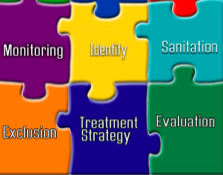
What is IPM??? (Integrated pest management) (Assessing pest problems)

answer
A comprehensive Multi-faceted approach to pest control including Prevention (PHC) First; Then utilizing Cultural, Physical or Mechanical and Biological controls in Addition to Conventional Chemical Pesticides.
question
Recognizing and Assessing Pest Problems
answer
Identifying the Pest that is responsible for causing plant damage-Some insects and diseases are more damaging than others and many problems produce similar plant symptoms.
question
Insect and Mite feeding types
answer
5 Major feeding behaviors *Chewing *sucking *Mining *boring *Galling
question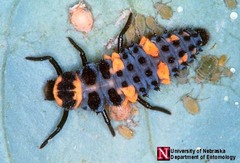
Chewing Insects

answer
Physically remove/consume portions of plants including leaves or possibly entire plant *Beetle *Caterpillars *Grasshoppers *Earwigs *Weevils
question
Sucking Insects
answer
Having piercing, sucking mouthparts that insert into plant to remove fluids-generally cause plant stunting and wilting *Aphids *Whiteflies *Mealybugys *Scales *Thripes *Leafhoppers *Spider mites. (picture of yellow aphid on leaf)
question
Mining Insects (leafminers)
answer
Create tunnels or blotches on leaves or stems as they feed below the surface and within the plant tissues.
question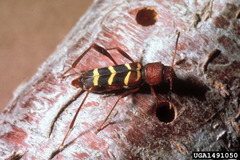
Wood boring insects

answer
*Beetles *Caterpillars *Wasps 1). Feed within the xylem and phloem. 2). Cause stunting, wilting, even death of plant (redheaded ash borer)
question
Galling insects or mites
answer
Exist inside of plants and create outgrowths on leaves and branches. Generally not harmful to plants but fungal galls can be.
question
Feeding behavior can be critical for IPM options
answer
Chewers, miners and suckers are exposed-generally easier to manage with insecticides or biological controls such as parasitic wasps and predators.
question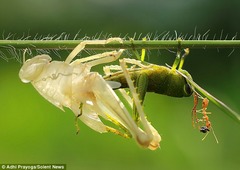
Insect leftovers (signs-shedding skin)

answer
Subtle remains that indicate insects presence such as molting (shedding of skin) of old skin.
question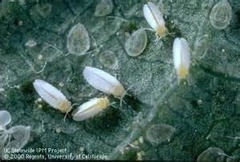
Honeydew

answer
* Many Sucking insects produce a clear, sticky liquid on a leaf surface evidence of their presence. *Require amino acids for development and reproduction consume large amounts of plant sap then excrete the excess as honeydew.
question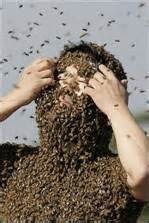
Problems with honey dew

answer
*Attracts wasps, hornets, yellow jackets to sting people *Attracts carpenter ants other ants that protect sucking insects from natural enemies (parasitoids and predators). *Excellent growing medium for black sooty mold fungi which can reduce photosynthesis and is aesthetically ugly.
question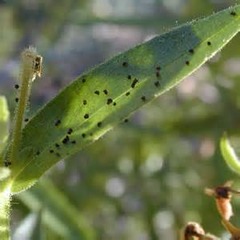
Frass deposits

answer
*Chewing insects (caterpillars particularly) excrete fecal matter from excess consumption *Lace bugs/thrips leave hardened black fecal deposits on underside leaves *Wood boring insects- sawdust at base of plant
question
Insect distribution and abundance
answer
*Usually populations in landscapes/gardens are distributed on plants in clumps or aggregations rather than uniformly *Reproductive capacity determines the abundance of insects. *Numbers may vary in time or space due to temperature, season, plant types grown, presence of natural enemies. *Knowing number can help estimate impact and determine impact if threshold has been reached to spend time and resources on management Ex:10-20 Japanese bettle grubs per sq ft in turf is sufficient to cause damage.
question
Amount of plant damage caused
answer
*Depends on- *Rate or reporduction and length of generation egg to adult *Number of generations *Number of eggs laid
question
Determining the impact of plant pests
answer
*TNSL *Timing-early, mid, or late season *Number *Stage- age or stage of plant development, small or young plants more susceptible than mature or older plants. *Location-how visible the plant is (foreground/background).
question
Evaluating pest populations (monitoring)
answer
*Yellow sticky cards to monitor populations of winged insects in a greenhouse (thrips, whiteflies, leafminers, beetles and moths). *Shake a plant/branch over a white sheet of paper spider mites will fall off/crawl around; crush them plant feeders produce a green streak, predatory mites produce and orange/red streak. *Attracting specie specific insects with phermones in traps. *Japanese beetle traps can attract more than would otherwise be present- locate traps away from susceptible plant(s).



